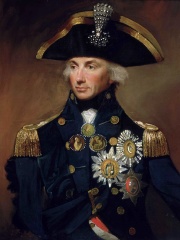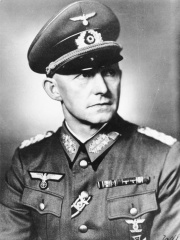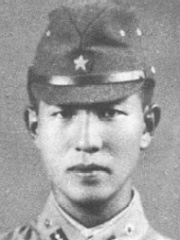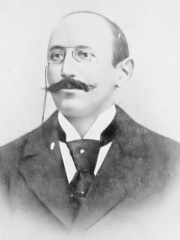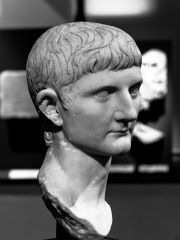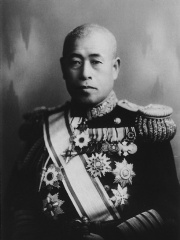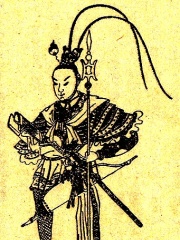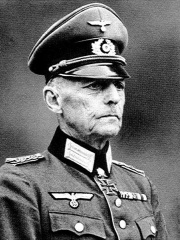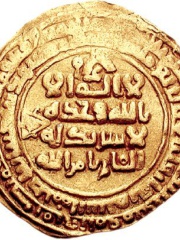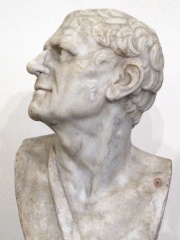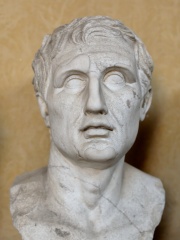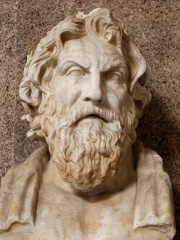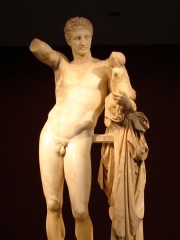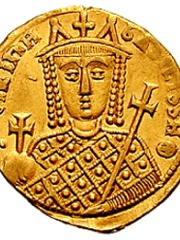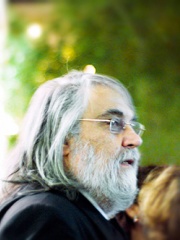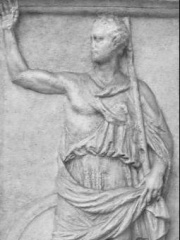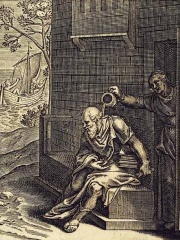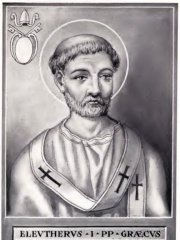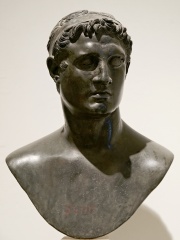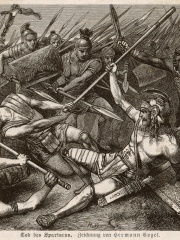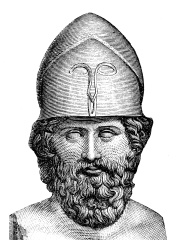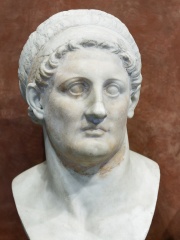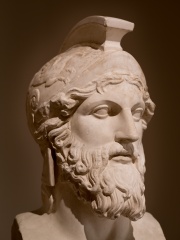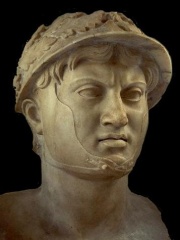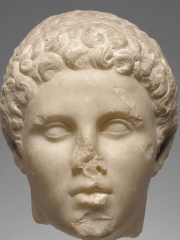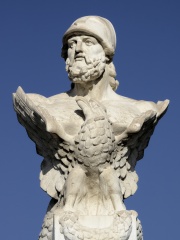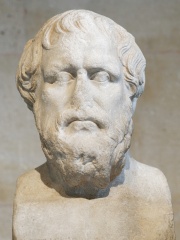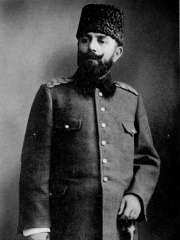MILITARY PERSONNEL
Seleucus I Nicator
358 BC - 281 BC
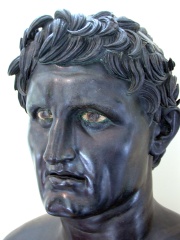
 Seleucus I Nicator
Seleucus I Nicator
Seleucus I Nicator (; Greek: Σέλευκος Νικάτωρ, Séleukos Nikátōr, "Seleucus the Victorious"; c. 358 BC – 281 BC) was a Macedonian Greek general, officer and successor of Alexander the Great who went on to found the eponymous Seleucid Empire, led by the Seleucid dynasty. Initially a secondary player in the power struggles following Alexander's death, Seleucus rose to become the total ruler of Asia Minor, Syria, Mesopotamia, and the Iranian plateau, assuming the title of basileus (king). The Seleucid Empire was one of the major powers of the Hellenistic world, until it was overcome by the Roman Republic and Parthian Empire in the late second and early first centuries BC. While serving under Alexander, Seleucus was commander of the Hypaspistai, an elite Macedonian infantry unit. After the death of Alexander in June 323 BC, Seleucus initially supported Perdiccas, the regent of Alexander's empire, and was appointed Commander of the Companions and chiliarch at the Partition of Babylon in 323 BC. Read more on Wikipedia
His biography is available in 73 different languages on Wikipedia (up from 69 in 2024). Seleucus I Nicator is the 51st most popular military personnel (up from 61st in 2024), the 56th most popular biography from Greece (up from 57th in 2019) and the 7th most popular Greek Military Personnel.
Seleucus I Nicator is most famous for his military victories in the east. He was the founder of the Seleucid Empire, which was one of the most powerful empires of the Hellenistic world.
Memorability Metrics
Page views of Seleucus I Nicator by language
Among MILITARY PERSONNELS
Among military personnels, Seleucus I Nicator ranks 51 out of 2,058. Before him are Stonewall Jackson, Horatio Nelson, 1st Viscount Nelson, Charles X Gustav of Sweden, Alfred Jodl, Douglas MacArthur, and Hiroo Onoda. After him are Alfred Dreyfus, Germanicus, Isoroku Yamamoto, Lü Bu, Gerd von Rundstedt, and Tughril.
Most Popular Military Personnels in Wikipedia
Go to all RankingsStonewall Jackson
1824 - 1863
HPI: 78.41
Rank: 45
Horatio Nelson, 1st Viscount Nelson
1758 - 1805
HPI: 78.38
Rank: 46
Charles X Gustav of Sweden
1622 - 1660
HPI: 78.35
Rank: 47
Alfred Jodl
1890 - 1946
HPI: 78.19
Rank: 48
Douglas MacArthur
1880 - 1964
HPI: 78.04
Rank: 49
Hiroo Onoda
1922 - 2014
HPI: 77.98
Rank: 50
Seleucus I Nicator
358 BC - 281 BC
HPI: 77.87
Rank: 51
Alfred Dreyfus
1859 - 1935
HPI: 77.76
Rank: 52
Germanicus
15 BC - 19
HPI: 77.73
Rank: 53
Isoroku Yamamoto
1884 - 1943
HPI: 77.69
Rank: 54
Lü Bu
161 - 199
HPI: 77.65
Rank: 55
Gerd von Rundstedt
1875 - 1953
HPI: 77.61
Rank: 56
Tughril
990 - 1063
HPI: 77.61
Rank: 57
Contemporaries
Among people born in 358 BC, Seleucus I Nicator ranks 1. Among people deceased in 281 BC, Seleucus I Nicator ranks 1. After him is Lysimachus.
Others Born in 358 BC
Go to all RankingsOthers Deceased in 281 BC
Go to all RankingsSeleucus I Nicator
MILITARY PERSONNEL
358 BC - 281 BC
HPI: 77.87
Rank: 1
Lysimachus
POLITICIAN
361 BC - 281 BC
HPI: 74.64
Rank: 2
In Greece
Among people born in Greece, Seleucus I Nicator ranks 56 out of 1,024. Before him are Queen Sofía of Spain (1938), Apollodorus of Athens (-180), Menander (-342), Antisthenes (-445), Praxiteles (-395), and Irene of Athens (752). After him are Vangelis (1943), Polybius (-208), Xanthippe (-500), Constantine II of Greece (1940), Pope Eleutherius (171), and Ptolemy II Philadelphus (-308).
Others born in Greece
Go to all RankingsQueen Sofía of Spain
NOBLEMAN
1938 - Present
HPI: 78.97
Rank: 50
Apollodorus of Athens
PHILOSOPHER
180 BC - 110 BC
HPI: 78.45
Rank: 51
Menander
WRITER
342 BC - 291 BC
HPI: 78.37
Rank: 52
Antisthenes
PHILOSOPHER
445 BC - 365 BC
HPI: 78.34
Rank: 53
Praxiteles
SCULPTOR
395 BC - 330 BC
HPI: 78.31
Rank: 54
Irene of Athens
POLITICIAN
752 - 803
HPI: 77.97
Rank: 55
Seleucus I Nicator
MILITARY PERSONNEL
358 BC - 281 BC
HPI: 77.87
Rank: 56
Vangelis
COMPOSER
1943 - 2022
HPI: 77.87
Rank: 57
Polybius
HISTORIAN
208 BC - 126 BC
HPI: 77.83
Rank: 58
Xanthippe
POLITICIAN
500 BC - 400 BC
HPI: 77.67
Rank: 59
Constantine II of Greece
POLITICIAN
1940 - 2023
HPI: 77.65
Rank: 60
Pope Eleutherius
RELIGIOUS FIGURE
171 - 189
HPI: 77.55
Rank: 61
Ptolemy II Philadelphus
POLITICIAN
308 BC - 246 BC
HPI: 77.45
Rank: 62
Among MILITARY PERSONNELS In Greece
Among military personnels born in Greece, Seleucus I Nicator ranks 7. Before him are Alexander the Great (-356), Spartacus (-109), Themistocles (-524), Ptolemy I Soter (-367), Miltiades (-540), and Pyrrhus of Epirus (-318). After him are Mardonius (-600), Hephaestion (-356), Cimon (-510), Pittacus of Mytilene (-650), Desmond Doss (1919), and Djemal Pasha (1872).
Alexander the Great
356 BC - 323 BC
HPI: 95.63
Rank: 1
Spartacus
109 BC - 71 BC
HPI: 82.09
Rank: 2
Themistocles
524 BC - 459 BC
HPI: 80.86
Rank: 3
Ptolemy I Soter
367 BC - 283 BC
HPI: 80.86
Rank: 4
Miltiades
540 BC - 488 BC
HPI: 80.08
Rank: 5
Pyrrhus of Epirus
318 BC - 272 BC
HPI: 79.22
Rank: 6
Seleucus I Nicator
358 BC - 281 BC
HPI: 77.87
Rank: 7
Mardonius
600 BC - 479 BC
HPI: 75.10
Rank: 8
Hephaestion
356 BC - 324 BC
HPI: 74.80
Rank: 9
Cimon
510 BC - 450 BC
HPI: 74.15
Rank: 10
Pittacus of Mytilene
650 BC - 570 BC
HPI: 72.77
Rank: 11
Desmond Doss
1919 - 2006
HPI: 72.42
Rank: 12
Djemal Pasha
1872 - 1922
HPI: 72.26
Rank: 13

